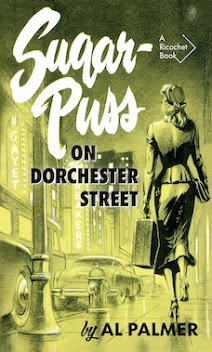
Looking into The Chartered Libertine I was surprised – shocked – to find that The Canadian Encyclopedia has no entry on Jack Kent Cooke. In fact, Mel Hurtig's baby contains not even a passing mention of the man. What gives? Yes, he left Canada in 1960... sure, he became an American citizen... but Cooke was a Hamilton boy born and bred.  Self-made, before heading south he'd come to own the most listened to radio station in Canada. His Triple-A Toronto Maple Leafs led the International League in attendence. What's more, bucking stereotype, this high school drop-out turned Saturday Night into the best Canadian literary magazine of its day. Robertson Davies was one of his hires.
Self-made, before heading south he'd come to own the most listened to radio station in Canada. His Triple-A Toronto Maple Leafs led the International League in attendence. What's more, bucking stereotype, this high school drop-out turned Saturday Night into the best Canadian literary magazine of its day. Robertson Davies was one of his hires.
 Self-made, before heading south he'd come to own the most listened to radio station in Canada. His Triple-A Toronto Maple Leafs led the International League in attendence. What's more, bucking stereotype, this high school drop-out turned Saturday Night into the best Canadian literary magazine of its day. Robertson Davies was one of his hires.
Self-made, before heading south he'd come to own the most listened to radio station in Canada. His Triple-A Toronto Maple Leafs led the International League in attendence. What's more, bucking stereotype, this high school drop-out turned Saturday Night into the best Canadian literary magazine of its day. Robertson Davies was one of his hires.
So, why no entry? Cooke underwrote the first Ali/Fraser fight, built the Los Angeles Forum with his own money and owned of the Lakers, the Kings and the Redskins. I mean, c'mon, the man bought the Chrysler Building.
 In Toronto, Cooke was a very powerful man; Ralph Allen, who relied on print media for his livelihood, was brave in taking him on. The reader of 1954 would've had no problem in identifying Cooke as the inspiration for Garfield Smith. Cooke owned CKEY, Smith owns CNOTE; Cooke made the Maple Leafs a success with gimmicks that are similar to those used to sell the Queens d'Amour. Then there are the lesser known things; like his model, Smith has an enviable library and an appreciation of fine art.
In Toronto, Cooke was a very powerful man; Ralph Allen, who relied on print media for his livelihood, was brave in taking him on. The reader of 1954 would've had no problem in identifying Cooke as the inspiration for Garfield Smith. Cooke owned CKEY, Smith owns CNOTE; Cooke made the Maple Leafs a success with gimmicks that are similar to those used to sell the Queens d'Amour. Then there are the lesser known things; like his model, Smith has an enviable library and an appreciation of fine art.
Reviewing The Chartered Libertine in the Globe and Mail, William Arthur Deacon displayed a certain caution, complimenting Allen on his use of "imaginary characters". The novel itself features no disclaimer – you know the type: "...any resemblance to persons, living or dead, is entirely coincidental." Allen covers himself by having Smith twice mention Cooke as a talented business rival. He also provides no glimpse of Smith's personal life... that is, until the very end of the novel, when he marries between innings in a game against the Cincinnati Barmaids. The bride, Queen d'Amour Honeybear Rodney, served as Smith's male assistant before agreeing to change sex as a publicity stunt to help sell tickets.
Cooke's own marriages were only a touch more conventional. Where The Canadian Encyclopedia is silent, Wikipedia steps in. The entry is awkward and repetitive, but the facts are spot on:
Cooke's first marriage, his longest, lasted 45 years. He and Barbara Jean Carnegie married in 1934, and were divorced in 1979. Carnegie was awarded what was then the largest divorce settlement in history - $42 million. The presiding judge during the bench trial was Joseph Wapner, who later became famous as the judge on television's The People's Court. Cooke and Carnegie had two sons: John Kent Cooke and Ralph Kent Cooke.Cooke's second marriage, to Jeanne Maxwell, lasted only 10 months.Cooke's third marriage, to Suzanne Elizabeth Martin, was even shorter: 73 days. During that brief marriage Martin, age 31, gave birth to a baby girl whom the couple named Jacqueline Kent Cooke. At the time of Jacqueline's birth, Cooke, her father (age 74), was 43 years older than Martin (age 31). Martin in the divorce action sought $15 million from Cooke.Following Cooke's death, it was revealed that his final wife, Marlene Ramallo Chalmers - a former drug runner from Bolivian who was 40 years his junior - had been cut out of his will. Cooke and Chambers had married in 1990, divorced in 1993 (after she made headlines in May 1992 by accidentally shooting herself in the finger and in September 1993 by driving drunk in Georgetown with a man pounding on the hood of her Jaguar convertible), and remarried in 1995. Chambers filed suit against Cooke's estate and reportedly received $20 million in a settlement reached about a year after Cook's death.
To the good folks at The Canadian Encyclopedia: Please don't make me have to turn to Wikipedia again.






























